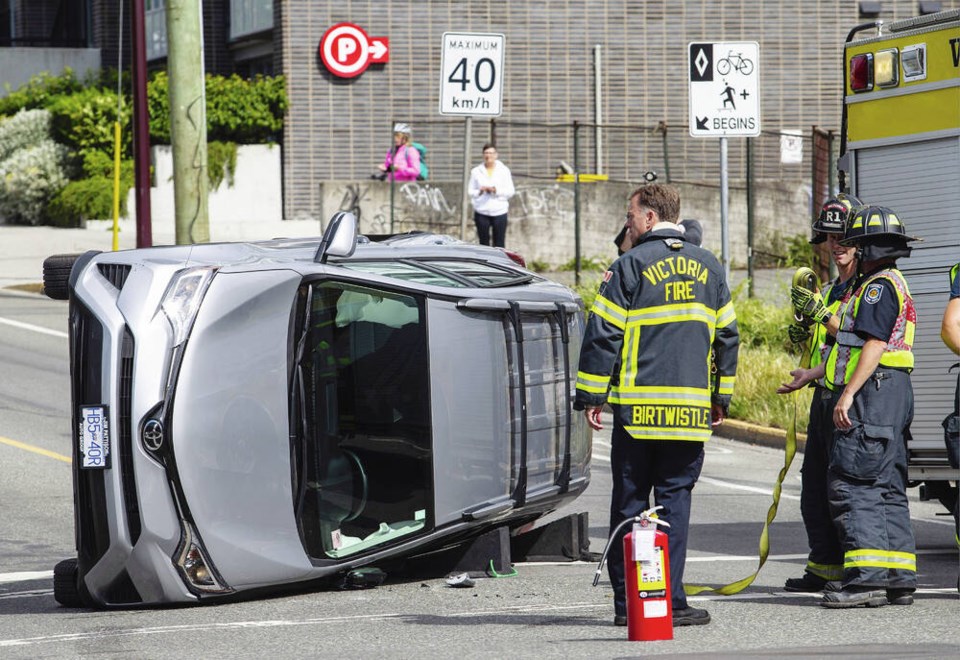The numbers remain astonishing. I’m talking about people who are killed by being ejected from their vehicles during a crash.
In less than 10 minutes of scanning of Canadian internet news feeds, I found more than 20 instances of ejection fatalities and I only flipped back three Google pages to April of this year.
How is that possible?
sa国际传媒 enacted its seat-belt laws in 1977. That’s 45 years of being legally required to belt up, yet it seems that every other weekend there is a report of a traffic fatality from somewhere in sa国际传媒 where the news release says “the driver/passenger was killed after being ejected from the vehicle….”
Here’s my own case study.
In 1982 I drove with friends to Inuvik. It was an incredible trip that included being snowed in for 3 days at Fort MacPherson before road crews could plow open the road — and that was in September.
On the return journey we were driving at night, just south of Hixon, sa国际传媒 It was a clear dry evening with good road conditions.
It was my turn at the wheel and I remember being on a long straight stretch of road. I made a routine glance in the side mirror and saw two pairs of headlights way behind me — I guessed more than a kilometre away. I can’t remember our exact speed, but it was highway normal.
In the milliseconds it took me to shift my eyes from the side mirror to look out front again, we were struck from behind.
The force of the impact drove our Toyota pickup off the road to the right, through the deep ditch, then up what seemed like an even steeper embankment. The truck then rolled twice back down the embankment where we ended partially upside down in the ditch.
I’m dazed and confused at the best of times, but this was another dimension. While hanging suspended nearly upside down with the truck’s roof pressing against my head, I first thought I had hit something in the road.
It had to be. There was nothing behind us, or so I thought.
As is the case in this country, heroes were all around us. Good folks stopped immediately and rushed in to help. A man climbed up the side of the truck and with a massive effort freed me from the driver’s seat, so that I was able to climb out of the window.
Once outside I was able to put it together. A car with its front end demolished and pushed back past the windshield lay strewn all over the ditch on the other side of the highway.
The RCMP concluded the other guy who hit us was travelling between 140 and 160 km/h at time of impact.
I’m pretty sure he was impaired as well but, for some strange reason, I can’t actually remember what happened around that part of it.
I do remember him asking the other people why they were calling the cops.
The “Big Guy” was certainly watching out for us that night. I only received a deep bruise to my right calf when it smashed into the four-wheel-drive lever and my back was sore. It’s still sore. But I’ll take sore any day.
Some ejections occur simply because the force is so severe that a vehicle is ripped apart and no amount of safety features can save you. There are certainly other reasons for ejections, but by far most ejections occur because people just don’t — or won’t — wear their seatbelts.
People ejected from their vehicles account for half of all the fatalities in a rollover crash.
Your risk of being catastrophically injured increases by a factor of 20 compared with occupants who remain in the vehicle. Your risk of dying increases by a factor of 91 when you are ejected out of your vehicle involved in a rollover crash.
Even surviving an ejection can be a dismal prospect. The aftermath often includes catastrophic spinal cord injuries, traumatic brain injuries, organ damage and amputations.
If there is anyone who thinks an airbag alone will solve any crash problem, think again. Dumping the seat belt because your vehicle has the latest and greatest airbag system increases your fatality risk by 41%.
One of the saddest statistics I located, from the Scientific World Journal, showed that, worldwide, crash ejection is a significant source of child mortality.
A lotto ticket that offered you a 50% chance of winning would sell out in moments. But those are the same odds by which you increase your chances of being injured or killed by not wearing a seat belt. It’s not a lottery I’m willing to play.
I wasn’t ejected from a horrendous crash. I had my seat belt on. I lived.



